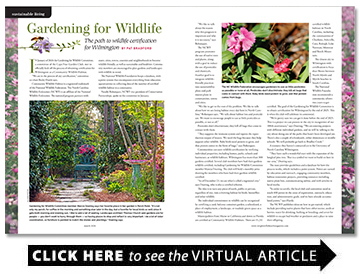Gardening for Wildlife
The path to wildlife certification for Wilmington
BY Pat Bradford

In January of 2024 the Gardening for Wildlife Committee, a committee of the Cape Fear Garden Club, met to officially kick off the process of obtaining certification for Wilmington as a Community Wildlife Habitat.
“We are in the process of city certification,” committee co-chair Becky Hardy says.
Community Wildlife Habitat is a registered trademark of the National Wildlife Federation. The North Carolina Wildlife Federation (NCWF) is an affiliate of the National Wildlife Federation. The national program partners with states, cities, towns, counties and neighborhoods to become wildlife friendly, as well as sustainable and healthier. Community members are encouraged to plan gardens and landscapes with wildlife in mind.
The National Wildlife Foundation keeps a database, with a point system that encompasses everything from education opportunities to collecting data of the number of certified wildlife habitat in a community.
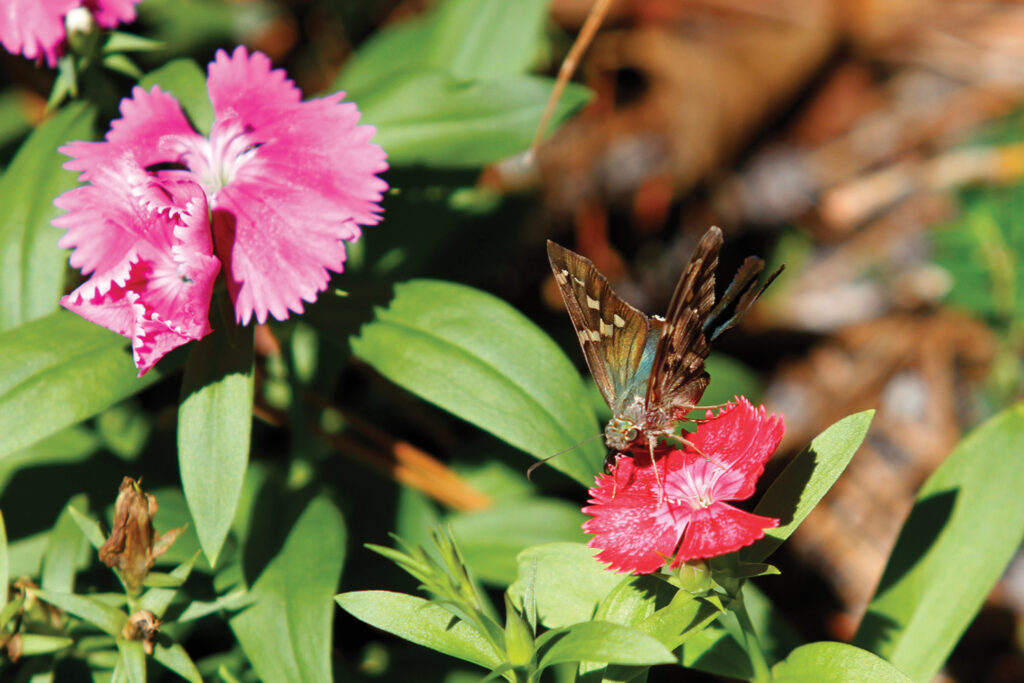
Natalie Bohorquez, NCWF vice president of Conservation Partnerships, spoke to the committee in January.
“We like to talk about the reason why this program is important and why it is necessary,” says Bohorquez.
The NCWF program promotes the use of native trees and plants, along with a goal to reduce the use of pesticides and chemicals. Another goal is to integrate wildlife-friendly practices into sustainability plans and park master plans in communities, towns and cities.
“We like to get to the root of the problem. We like to talk about how we are losing habitat every day here in North Carolina,” Bohorquez says. “We talk about habitat loss and pesticide use. We want to encourage people to use as little pesticides as possible, or not at all.”
Pesticides don’t discriminate; they kill all bugs that come in contact with them.
“They suppress the immune system and repress the reproduction output of insects. We need the bugs because they help support other wildlife. Baby birds need protein to grow, and that protein comes in the form of bugs,” says Bohorquez.
Communities can earn wildlife certification by verifying individual properties, including homes, parks, schools and businesses, as wildlife habitats. Wilmington has more than 300 gardens certified. Several club members have had their gardens wildlife certified, including Gardening for Wildlife Committee member Marcia Doering. The club will hold a monthly prize drawing for members who have had their gardens wildlife certified.
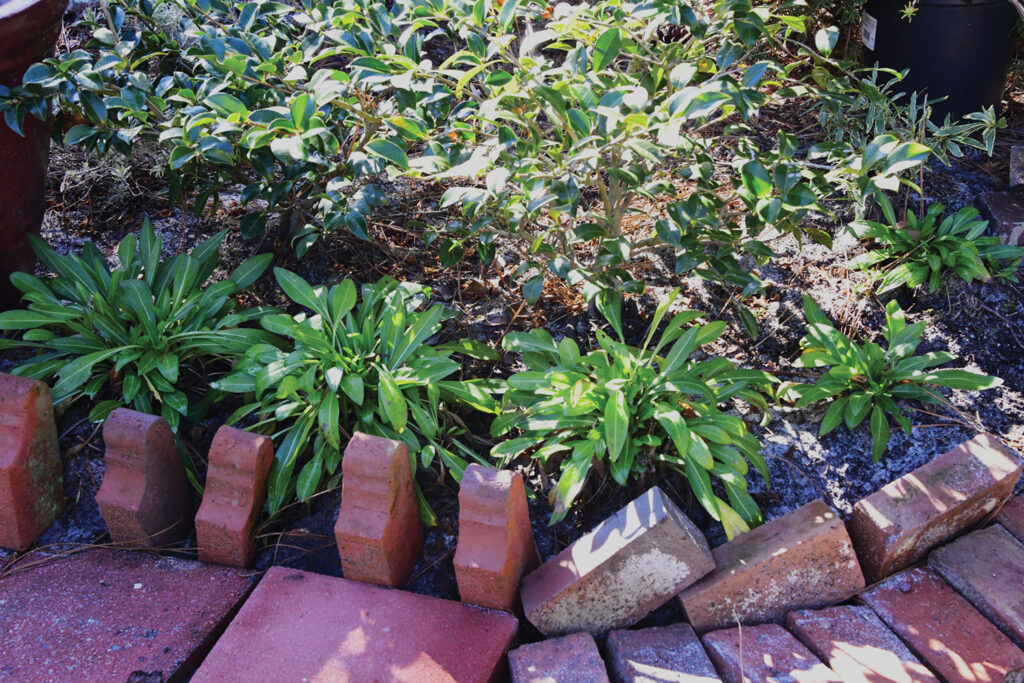
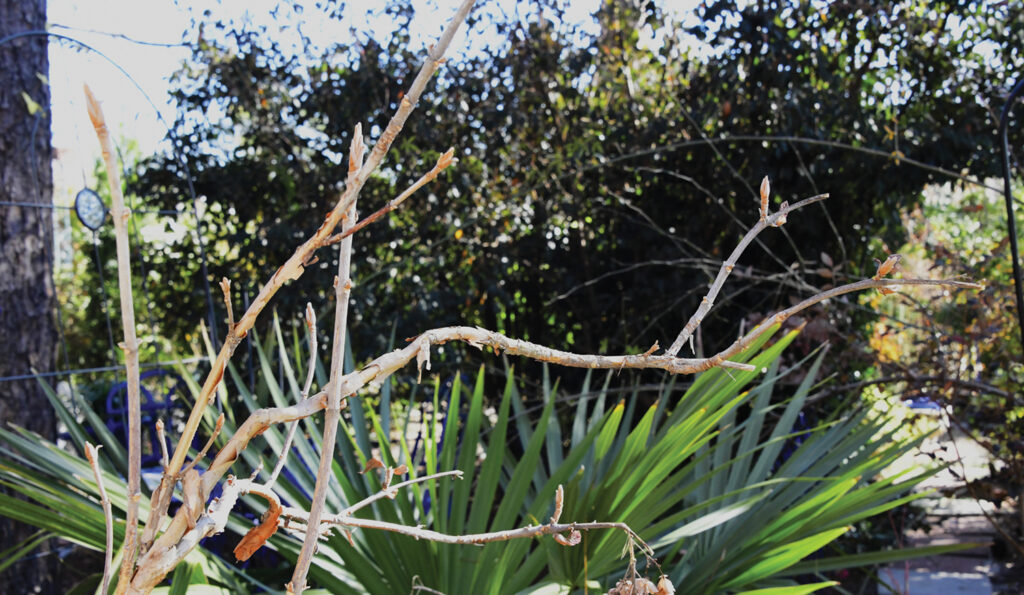
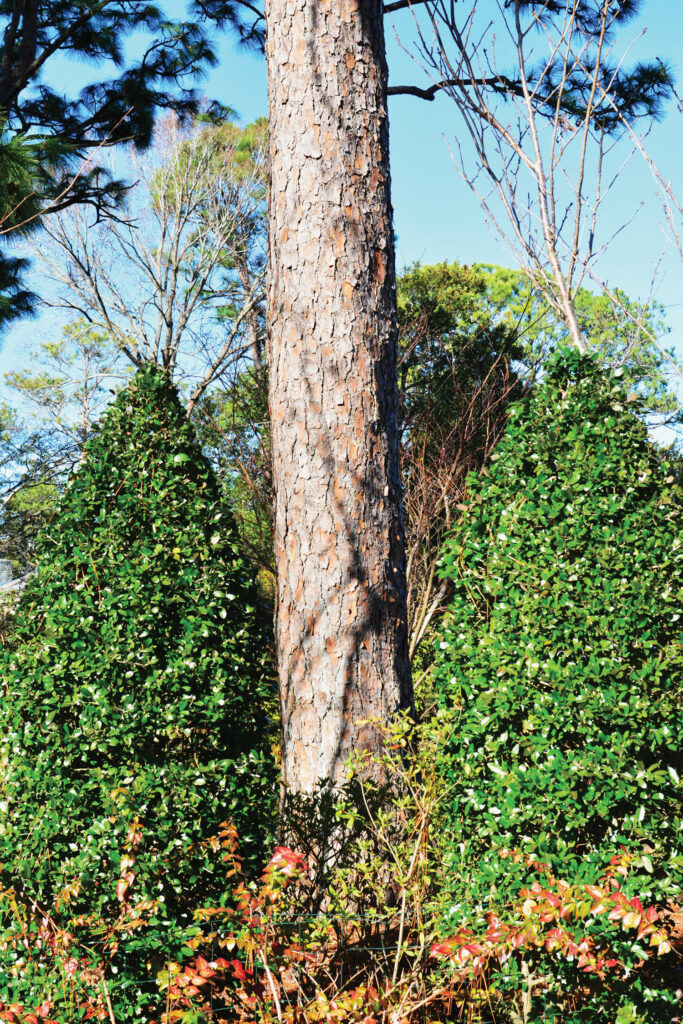
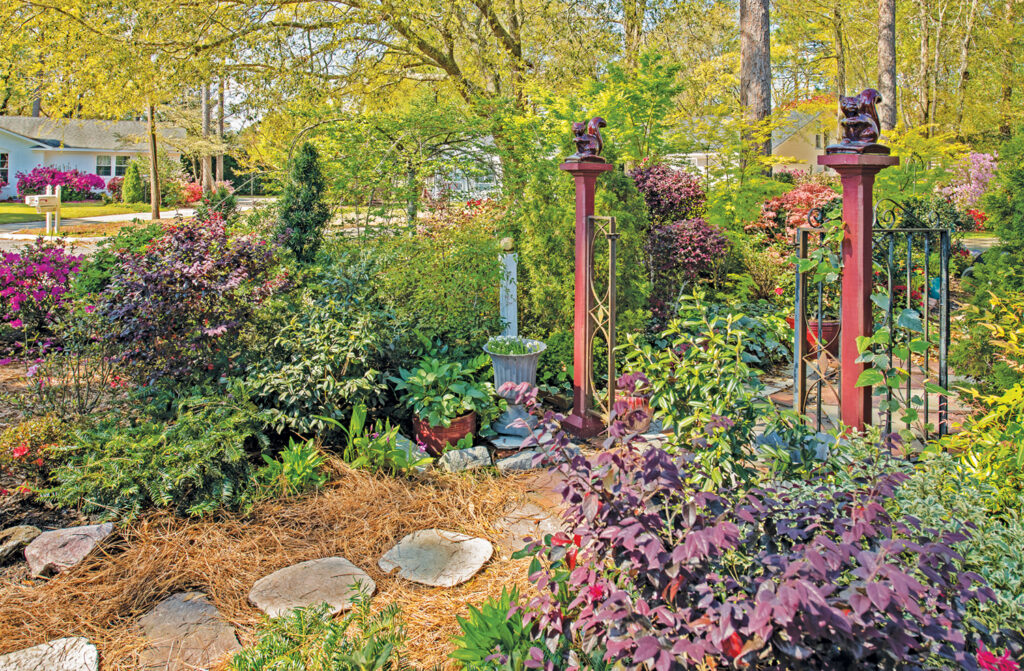
“As of December 23, we are what’s called a registered city,” says Doering, who is also a certified arborist.
The idea is to turn any piece of earth, public or private, regardless of size, into a thriving habitat for birds, butterflies and other wildlife.
The individual commitment to wildlife can be recognized by certifying a yard, balcony container garden, a schoolyard, a place of employment, a landscape, or roadside green space as a wildlife habitat.
Municipalities from Maine to California and down to Florida are certified as Community Wildlife Habitats. There are 15,211 certified wildlife habitats in North Carolina, including the communities of Charlotte, Asheville, Cary, Raleigh, Lake Norman, Montreat and Beech Mountain.
The closest city to Wilmington with certification is Arcadian Shores between North Myrtle and Myrtle beaches in South Carolina.
The National Wildlife Foundation recommends a community allows two years to get certified. The goal of the Gardening for Wildlife Committee is to obtain certification for Wilmington by the end of 2025. This is when the club will celebrate its centennial.
“We’re pretty sure we can get it done before the end of 2025. This is a project we can present to the city in recognition of our 100th anniversary,” says Doering. “We are entering projects with different individual gardens, and we will be talking to the city about doing one of the parks that hasn’t been developed yet. There’s also a couple of schoolyards, either elementary or middle schools. We will probably go back to Bradley Creek.”
A resource they haven’t contacted yet is the University of North Carolina Wilmington.
“They have such a wonderful start with the expansion of the longleaf pine tree. That is a symbol we want to build on here in our area,” Doering says.
The state provides guidelines and a database for how the process works, which includes a point system. Points are earned by education and outreach, engaging community members, habitat restoration projects, providing resources including native plant lists, communicating online, and with articles in local media.
“In order to certify, the local club and committee need to reach 400 points in the areas of registration, outreach, education, and administrative goals, and we have already accumulated points,” says Hardy.
The NCWF publishes ideas on how to get started, which include providing native plants that have either nectar, seeds or berries; water for drinking, bathing or breeding; and cover for wildlife to escape bad weather or predators and a place to raise their offspring.
Resources: www.ncwf.org
www.nwf.org/CommunityWildlifeHabitat/Home/About
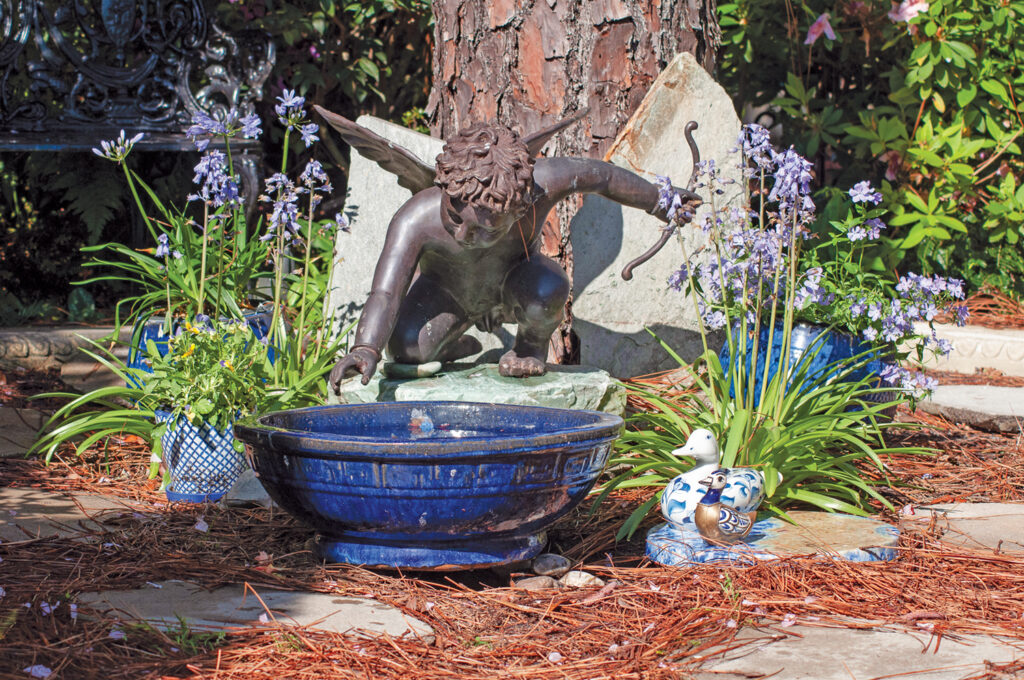
Laying Out Necessities & Amenities
Needed Provisions
Food
- Plants with seeds, berries, nectars and nuts
- Feeders can supplement:
- Seed feeder
- Suet feeder
- Hummingbird feeder
- Squirrel feeder
Cover
- Wooded area
- Ground cover
- Log pile
- Roosting box
- Evergreen shrubs and trees
Water
- Birdbath
- Lakefront
- Stream
- Water garden/pond
- Fountain with running water
Places to Raise Young
- Mature trees
- Nesting box
- Dense shrubs
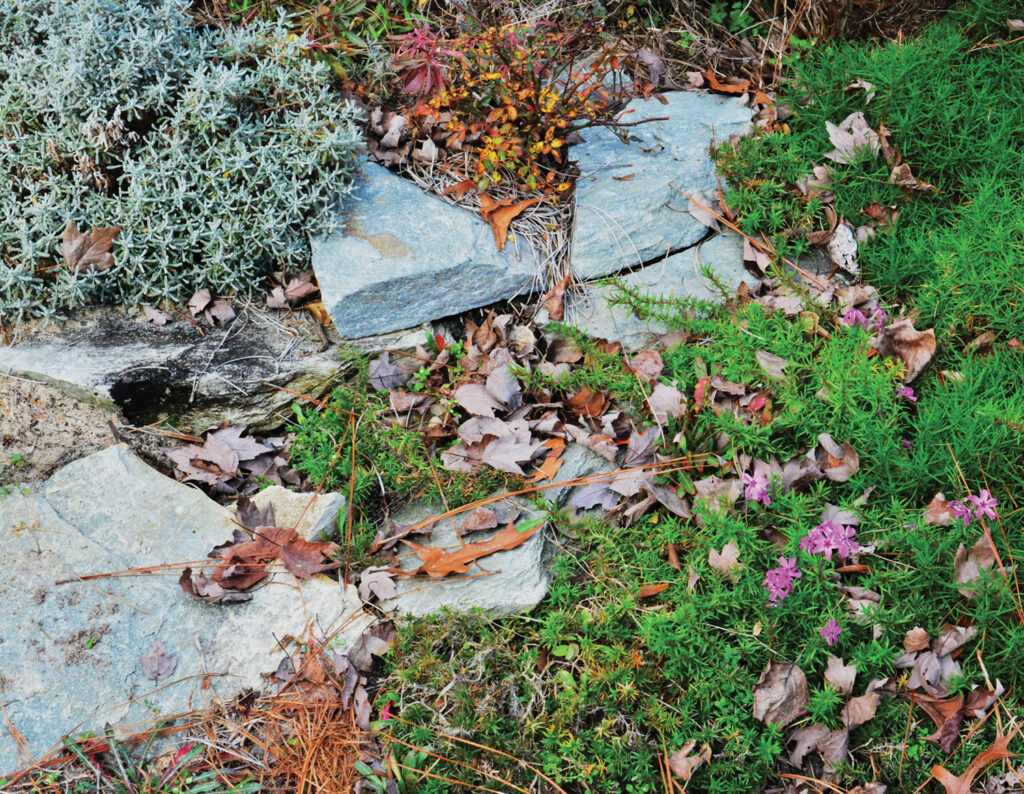
Native Coastal Pollinator Plants
Herbaceous Plants
- Coral honeysuckle (Lonicera sempervirens)
- Split beard bluestem (Andropogon ternarius)
- Seashore mallow (Kosteletzkya virginica)
- Sea oats (Chasmanthium latifolium)
- Little bluestem (Schizachyrium scoparium)
- Seaside little bluestem (Schizachyrium littorale)
- Seaside goldenrod (Solidago sempervirens)
- Curly-leaf yucca (Yucca filamentosa)
- Cinnamon fern (Osmunda cinnamomea)
- Blanket flower (Gaillardia pulchella)
- Black-eyed susan (Rudbeckia hirta)
- Spotted beebalm (Monarda punctata)
- Blazing star (Liatris spicata)
- Butterfly weed (Asclepias tuberosa)
- Sweet goldenrod (Solidago odora)
Trees and Shrubs
- Beautyberry (Callicarpa americana)
- Dwarf palmetto (Sabal minor)
- Sweetbay magnolia (Magnolia virginiana)
- Sweet pepperbush (Clethra alnifolia)
